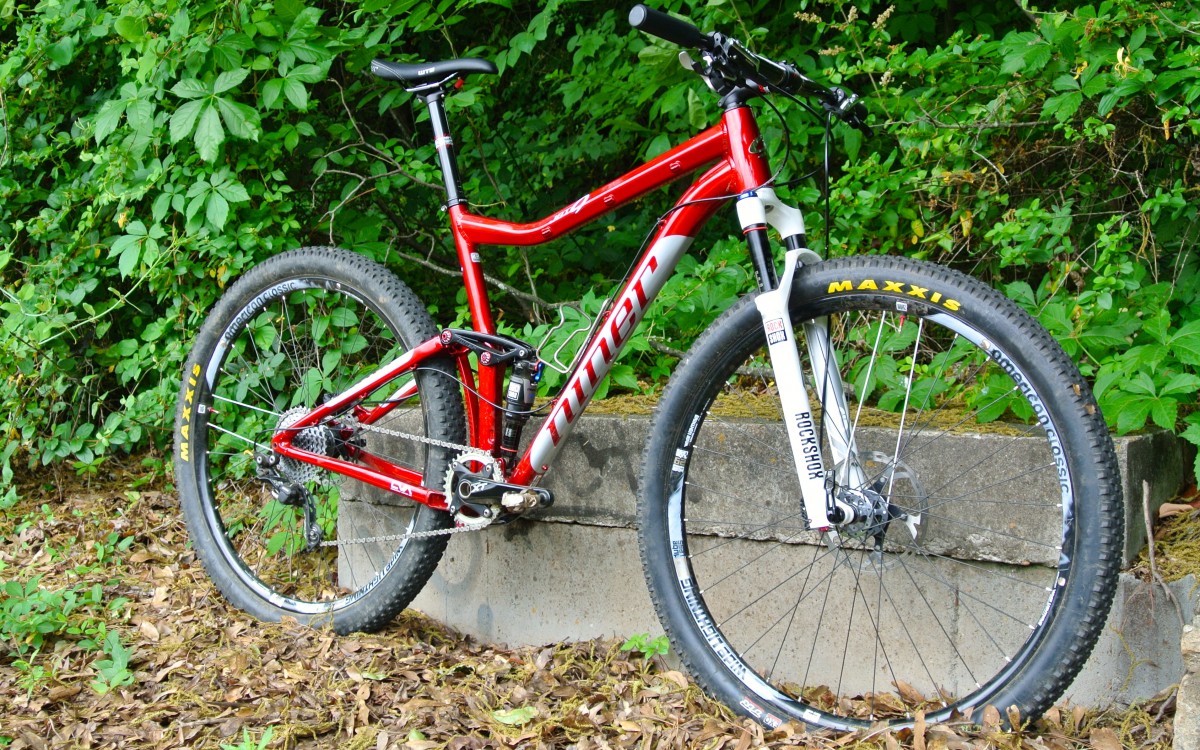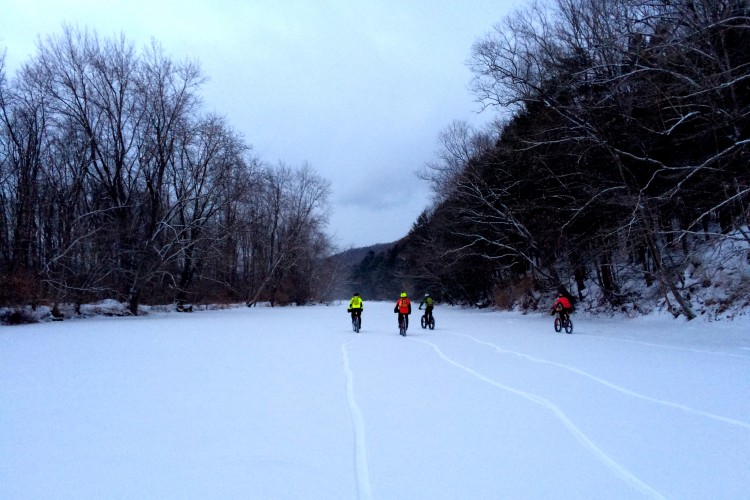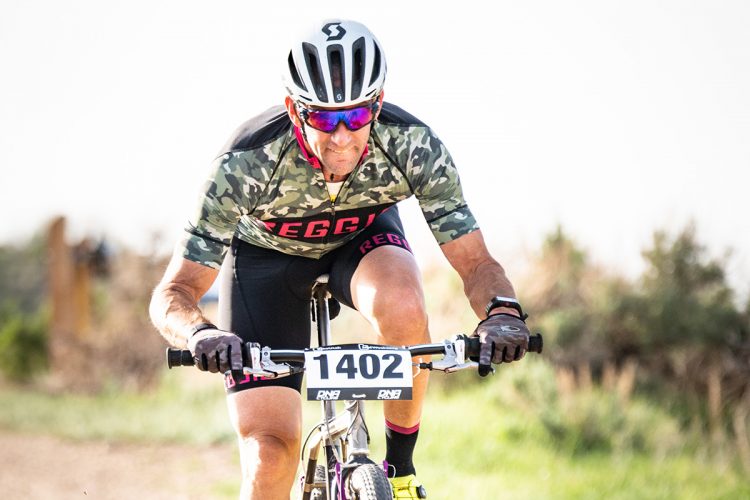
A seven-day stage race like the Trans-Sylvania Epic is a big undertaking. You have to make sure that you can handle a week on the bike physically, mentally, logistically, and mechanically. While I have extensive experience racing in general, I’ve only done one other stage race, the BC Bike Race. (If you’re interested in my experience in BC, you can read all about it here.)
So, how am I getting ready for my latest challenge?
Physically
While I was initially really excited for the cyclocross season last fall, I lost interest after the first race or two. Fall is my favorite time to mountain bike, and the call of the trails was too strong. Instead of spending my weekends riding myself into the pain cave, I opted to enjoy chill trail rides with my buddies.

I think I made the right call, as my motivation to ride stayed high throughout the winter. Here in Georgia our winters are fairly mild temperature-wise, but they tend to be very wet. This means trail time can be quite limited, and I found myself riding the road bike several times a week. I was glad I got out on the trails while the conditions were primo!
As the temperatures warmed and the trails dried out, I started mixing in more trail rides. While I followed a pretty regimented training plan for the BC Bike Race last year, life has gotten a bit in the way for such a plan this year. I’ve still been getting in plenty of miles, but it’s been less structured. I try to get five days of riding and two rest days each week. A couple days are intense, while the others are less so. If something comes up and I have to miss a day of riding, I don’t stress about it and I don’t try to make up for it the next time out.
Since I haven’t been regimented in my training, I’ve tried to enhance my performance by losing some weight. As much as I’d like to be a 150lb XC-whippet, at 6′ tall with a large frame it’s just not in the cards for me. That said, I have dropped about 15lbs since December. I’ve done that through a combination of eating better, eating less, and drinking less beer (sad face). If I can maintain the same power, but have less weight to propel, then I’ll be faster. That’s my thinking, anyway.
Mentally
Keeping your head right is a big part of racing. I’m sure there are sports psychologists that can suggest exercises to train your brain, but my learning has been on the bike through countless hours in the saddle during training, racing, and fun rides.
The BC Bike Race was a huge mental boost for me. Just completing an event like that will give you a new-found appreciation of how hard you can go. In events such as those, you get to what you think is the absolute bottom of your tank, and then you find another 1/2 gallon of gas sloshing around. It may be just enough to get you to the end of the stage, but it’s more than you thought you had.

As mentioned above, skipping out on ‘cross season turned out to be a good idea, too. It kept my motivation high and had me pumped to do some racing this year. Maybe the lesson there is to listen to your gut. If it’s telling you to go have fun, then that’s what you should do.
I am competitive and want to do well in any race I enter, but I’m also realistic. My chances of standing on the top (or any) step of the podium of a major race are non-existent, and I’m ok with that. With practical expectations for my performance, it’s easier to stay positive. I’m not setting the bar low or taking the “I just want to finish” approach–I’m simply being reasonable.
Logistically
Logistics are the least sexy part of racing. However, they are extremely important. How you get yourself and your bike to the race, where you stay, and your nutrition can impact your stress levels and performance.
The BC Bike Race made things very easy on the racers, at least once we got there. Getting to Vancouver was a journey involving multiple flights, trains, boats, and buses (seriously). When the race started, all we had to do was show up and ride. After we’d finished the stage, they’d load our bikes on a truck and take them to the start of the following day. Our tents were already set up in the finish area and our bags were waiting for us. There was a lot of getting on and off buses and ferries, but it required minimal mental effort. We went where the volunteers pointed.

While the BC Bike Race moves around each day, the Trans-Sylvania Epic stays put. The Seven Mountains Scout Camp will be our home for the week. A couple of the stages will require a shuttle, but most will start and finish right at the Scout Camp. I’m stoked to have just one home base for the entire race.
I decided to drive to Pennsylvania from Atlanta instead of flying. It’s going to be a long haul at 12+ hours, but it will be less expensive and less stressful in the long run. I won’t have to worry about the airline damaging my bike or getting gouged on baggage fees. I could always ship my bike in advance, but that presents another set of problems to solve. Where would I ship the bike? Would I have to rent a car to pick up the bike? Would my bike make it in one piece?

Driving to the race also means I can bring a lot more stuff with me… like an entire bike as backup to scavenge parts off of if needed, my work stand, and complete tool kit. The drive itself is going to suck, but in the end, I think it’s the right decision.
The Trans-Sylvania Epic offers meal plans for the week, which gets you breakfast and dinner each day. They even offer vegetarian, vegan, and gluten-free options for those with with specific dietary restrictions. In my experience, meal plans are the way to go. It’s one less thing for you to worry about each day.
There’s even a laundry option where you drop off your dirty kit in the evening and it comes back clean the next morning! Since I’ve got plenty of jerseys, but not enough good chamois to make it through seven days, I’m taking this option.
Mechanically
To finish first, you must first finish. -Rick Mears (4-time winner of the Indianapolis 500)
This is a quote I often think of when getting ready to race. It reminds me to make sure my equipment is dialed before I toe the line. Also, it can help steer equipment selection. The most obvious example I can think of is tires. While a lightweight tire may help you expend less energy, those seconds saved are easily erased by a flat.

It’s also a reminder to ride smart. Sometimes it’s better to take the safe line over some rocks than to launch into the unknown. You may save your wheel from getting destroyed or stop from shearing off your derailleur–a surefire way to end your day, or in this case, your week.
I’ll be racing on a Niner JET 9 alloy. With a full Shimano XT drivetrain and RockShox suspension, it’s a solid build. However, I did make a few modifications to better suit my needs.

The first thing to go was the stock Schwalbe tires. They felt super thin and after inflating them, air and sealant were leaking through the sidewalls. The stock Stan’s Arch EX wheels were replaced as well. There’s nothing wrong with them, but I had a set of American Classic’s Wide Lightning wheels on hand. They’re wider, stiffer, and lighter than the Stan’s wheels. Can’t beat that.
I mounted up some of Maxxis’ top-spec Ikon 29×2.35 tires. They’re heavier than the Schwalbes, but I’m familiar with their performance and I know they can take a beating. Before leaving town I may swap the rear for something narrower, around 2.20″.
The Niner was spec’d with a 2×10 crankset, but I prefer 1×10 setups. So, I removed the stock chainrings, front derailleur, and shifter. I installed a 32T Hope Retainer Ring in their place. Why? Well for one, it’s a simpler setup which means there’s less that could go wrong. Also, I know I’ll be inclined to use the smallest gear I have. That granny ring would sing its siren song, and I would heed its call. Less gears, less excuses–and hopefully faster times.
I also swapped out the stock Niner grips, but that’s strictly a personal preference. They’re chunky and narrow. While I have large hands, I prefer thinner-diameter grips. It feels like I have more control that way.

Making all these changes saved about half a pound over the stock build, but that’s just a bonus in my book. Swapping wheels and ditching the 2×10 saved a lot of weight, but the tires added a bit of it back. What’s important is that I have I bike I’m confident will be able to handle a week of abuse in Central Pennsylvania.
Hopefully, I have all my bases covered! If I don’t… well, I’ll just have to adapt. The Trans-Sylvania Epic starts May 24th whether I’m ready or not. Stay tuned for my coverage of the event!


















